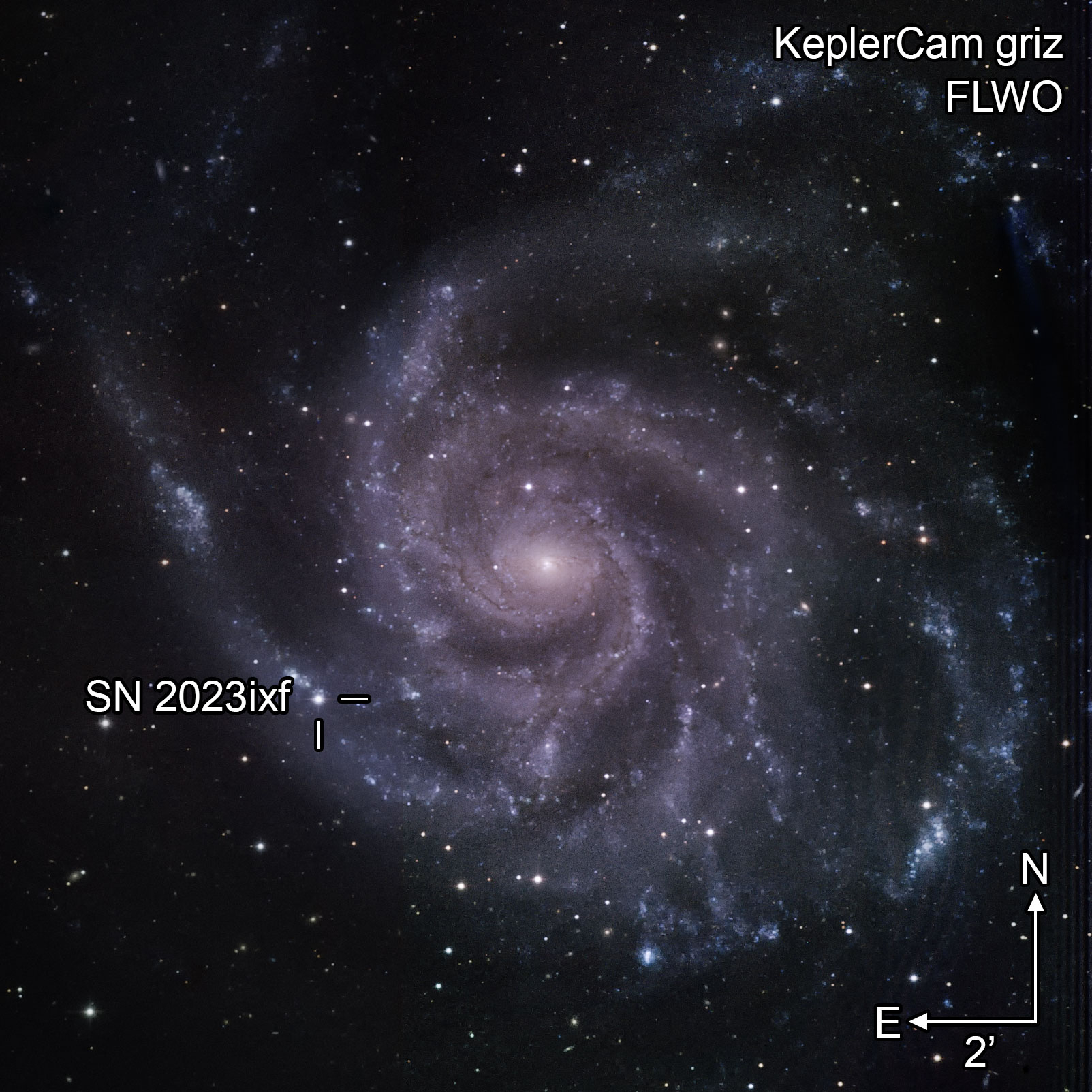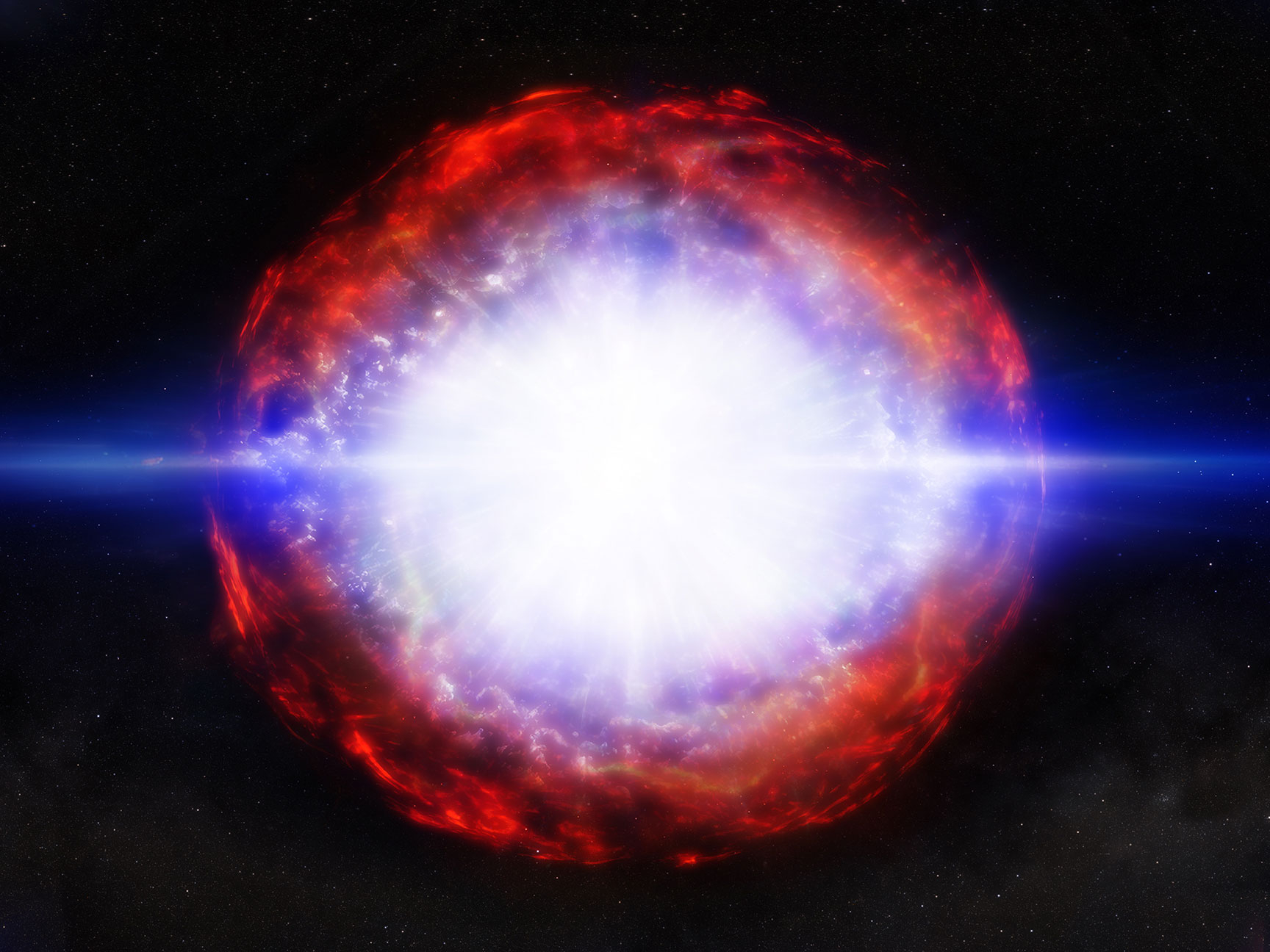Right before exploding, this star puffed out a sun's worth of mass
The supernova, pinpointed by amateur astronomers, could prove to be a lynchpin in our understanding of massive star deaths.

A massive star that exploded in the Pinwheel Galaxy in May appears to have unexpectedly lost approximately one sun's worth of ejected mass during the final years of its life before going supernova, new observations have shown. This discovery reveals more about the enigmatic end days of massive stars.
On the night of May 19, Japanese amateur astronomer Kōichi Itagaki was conducting his regular supernova sweep using telescopes based in three remote observatories dotted around the country. They were located, for instance, in Yamagata, Okayama and on the island of Shikoku.
Amateur astronomers have a long history of discovering exploding stars before the professionals spot them: Itagaki has raked in over 170, just beating out UK amateur astronomer Tom Boles’ tally of more than 150. When Itagaki spotted the light of SN 2023ixf, however, he immediately knew he'd found something special. That’s because this star had exploded in the nearby Pinwheel Galaxy (Messier 101), which is just 20 million light-years away in the constellation of Ursa Major, the Great Bear. Cosmically speaking, that's pretty close.
Related: See new supernova shine bright in stunning Pinwheel Galaxy photo
Soon enough, amateur astronomers around the world started gazing at SN 2023ixf because the Pinwheel in general is a popular galaxy to observe. However, haste is key when it comes to supernova observations: Astronomers are keen to understand exactly what is happening in the moments immediately after a star goes supernova. Yet all too often, a supernova is spotted several days after the explosion took place, so they don’t get to see its earliest stages.
Considering how close, relatively speaking, SN 2023ixf was to us and how early it was identified, it was a prime candidate for close study.
Itagaki sprang into action.
Breaking space news, the latest updates on rocket launches, skywatching events and more!
"I received an urgent e-mail from Kōichi Itagaki as soon as he discovered SN 2023ixf," said postgraduate student Daichi Hiramatsu of the Harvard–Smithsonian Center for Astrophysics (CfA) in a statement.
The race to decode a supernova
Alerted to the supernova, Hiramatsu and colleagues immediately followed-up with several professional telescopes at their disposal including the 6.5-meter Multi Mirror Telescope (MMT) at the Fred Lawrence Whipple Observatory on Mount Hopkins in Arizona. They measured the supernova's light spectrum, and how that light changed over the coming days and weeks. When plotted on a graph, this kind of data forms a "light curve."
The spectrum from SN 2023ixf showed that it was a type II supernova — a category of supernova explosion involving a star with more than eight times the mass of the sun. In the case of SN 2023ixf, searches in archival images of the Pinwheel suggested the exploded star may have had a mass between 8 and 10 times that of our sun. The spectrum was also very red, indicating the presence of lots of dust near the supernova that absorbed bluer wavelengths but let redder wavelengths pass. This was all fairly typical, but what was especially extraordinary was the shape of the light curve.
Normally, a type II supernova experiences what astronomers call a 'shock breakout' very early in the supernova's evolution, as the blast wave expands outwards from the interior of the star and breaks through the star's surface. Yet a bump in the light curve from the usual flash of light stemming from this shock breakout was missing. It didn’t turn up for several days. Was this a supernova in slow motion, or was something else afoot?
"The delayed shock breakout is direct evidence for the presence of dense material from recent mass loss," said Hiramatsu. "Our new observations revealed a significant and unexpected amount of mass loss — close to the mass of the sun — in the final year prior to explosion."
Imagine, if you will, an unstable star puffing off huge amounts of material from its surface. This creates a dusty cloud of ejected stellar material all around the doomed star. The supernova shock wave therefore not only has to break out through the star, blowing it apart, but also has to pass through all this ejected material before it becomes visible. Seemingly, this took several days for the supernova in question.
Massive stars often shed mass — just look at Betelgeuse’s shenanigans over late 2019 and early 2020, when it belched out a cloud of matter with ten times the mass of Earth’s moon that blocked some of Betelgeuse’s light, causing it to appear dim. However, Betelgeuse isn’t ready to go supernova just yet, and by the time it does, the ejected cloud will have moved far enough away from the star for the shock breakout to be immediately visible. In the case of SN 2023ixf, the ejected material was still very close to the star, meaning that it had only recently been ejected, and astronomers were not expecting that.
Hiramatsu’s supervisor at the CfA, Edo Berger, was able to observe SN 2023ixf with the Submillimeter Array on Mauna Kea in Hawaii, which sees the universe at long wavelengths. He was able to see the collision between the supernova shockwave and the circumstellar cloud.
"The only way to understand how massive stars behave in the final years of their lives up to the point of explosion is to discover supernovae when they are very young, and preferably nearby, and then to study them across multiple wavelengths," said Berger. "Using both optical and millimeter telescopes we effectively turned SN 2023ixf into a time machine to reconstruct what its progenitor star was doing up to the moment of its death."
The question then becomes, what caused the instability?
Stars, they're just like onions
We can think of an evolved massive star as being like an onion, with different layers. Each layer is made from a different element, produced by sequential nuclear burning in the star's respective layers as the stellar object ages and its core contracts and grows hotter. The outermost layer is hydrogen, then you get to helium. Then, you go through carbon, oxygen, neon and magnesium in succession until you reach all the way to silicon in the core. That silicon is able to undergo nuclear fusion reactions to form iron, and this is where nuclear fusion in a massive star’s core stops — iron requires more energy to be put into the reaction than comes out of it, which is not efficient for the star.
Thus the core switches off, the star collapses onto it and then rebounds and explodes outwards.
One possibility is that the final stages of burning high-mass elements inside the star, such as silicon (which is used up in the space of about a day), is disruptive, causing pulses of energy that shudder through the star and lift material off its surface. It's certainly something that astronomers will look for in the future, now that they’ve been able to see it in a relatively close supernova.
What the story of SN 2023ixf does tell us is, at the very least, that despite all the professional surveys hunting for transient objects like supernovas, amateur astronomers can still make a difference.
"Without … Itagaki’s work and dedication, we would have missed the opportunity to gain critical understanding of the evolution of massive stars and their supernova explosions," said Hiramatsu.
In recognition of his work Itagaki, who continued to make observations of the supernova that were of use to the CfA team, is listed as an author on the paper describing their results. That paper was published on Sept. 19 in The Astrophysical Journal Letters.

Keith Cooper is a freelance science journalist and editor in the United Kingdom, and has a degree in physics and astrophysics from the University of Manchester. He's the author of "The Contact Paradox: Challenging Our Assumptions in the Search for Extraterrestrial Intelligence" (Bloomsbury Sigma, 2020) and has written articles on astronomy, space, physics and astrobiology for a multitude of magazines and websites.


